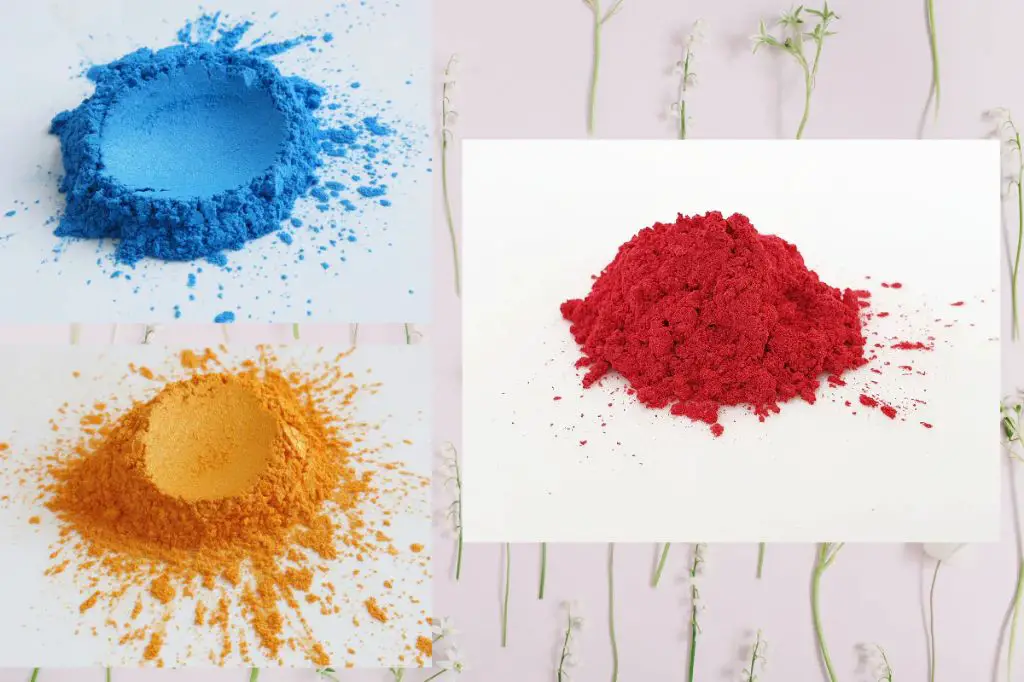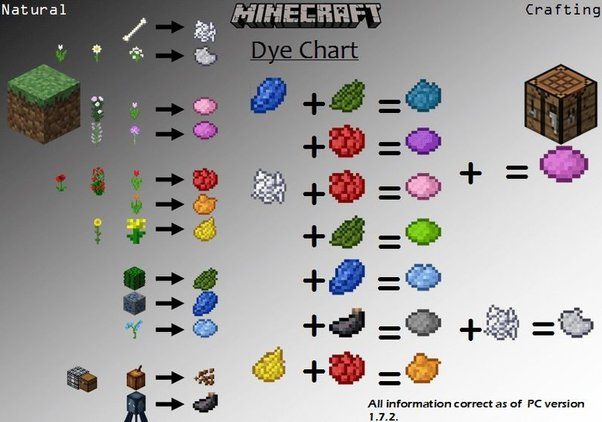Is Mica 100% Natural?
What is Mica?
Mica is a naturally occurring mineral that refers to a group of silicate minerals with a layered sheet-like structure. The word “mica” comes from the Latin word “micare” meaning “to shine,” reflecting the mineral’s brilliant luster (Britannica, 2022). Mica minerals contain aluminium, potassium, magnesium, iron, and even lithium and are distinguished by their flaky or platy forms and sheet-like structure (Mineral Education Coalition, 2022).
The most common mica minerals are muscovite and biotite. Muscovite has a clear, transparent color while biotite is darker in color. Mica minerals are elastic and can be split into very thin sheets or flakes. They have high dielectric strength, chemical inertness, insulation properties and a high melting temperature (Wikipedia, 2022). Micas are lightweight and hydrous minerals, meaning they contain water molecules within their crystalline structure.
Mica Formation
Mica forms naturally deep within the earth’s crust from crystallization of magma. According to Slo Food Group, “Muscovite is formed by crystallization of magma from the hot gases, vapors, and hot solution.” As the magma cools, mica crystals start to form. Mica can form in metamorphic, igneous, and sedimentary rocks.
Large mica deposits are found in India, South Dakota, North Carolina, and New Mexico. According to Wikipedia, “Flake mica comes from several sources: the metamorphic rock called schist as a byproduct of processing feldspar and kaolin resources, from placer deposits, and from pegmatites.” Pegmatites are igneous rocks with large crystal grains that often contain mica. Overall, mica formation occurs naturally from geological processes and deposits are found across the world.
Mica Composition
The chemical composition of mica can vary depending on the specific type. According to the Ted Pella website, muscovite mica is composed of 45.57% silica (SiO2), 33.10% alumina (Al2O3), 10.24% potassium oxide (K2O), as well as smaller amounts of sodium oxide, calcium oxide, magnesium oxide and ferric oxide (Ted Pella).
The most common types of mica are muscovite and phlogopite. Muscovite mica has a potassium aluminum silicate chemical formula of KAl2(AlSi3O10)(F,OH)2. Phlogopite mica has a magnesium aluminum silicate chemical formula of KMg3(AlSi3O10)(F,OH)2 (Wikipedia). So while both are potassium aluminum silicates, muscovite contains potassium and aluminum, while phlogopite contains magnesium and aluminum.
Other varieties of mica include biotite (iron magnesium aluminum silicate), lepidolite (lithium aluminum silicate), and paragonite (sodium aluminum silicate). The different chemical compositions give each type of mica slightly different properties and applications.
Mica Crystal Structure
Mica has a sheet-like structure consisting of silicate tetrahedron sheets bonded together by interlayer cations like potassium, sodium, or calcium. The silicate tetrahedrons bond together to form a two-dimensional network while the interlayer cations weakly bond successive tetrahedral sheets together (https://en.wikipedia.org/wiki/Mica).
The sheet-like structure gives mica unique properties like elastic flexibility and perfect basal cleavage. Mica can be split into very thin sheets due to the weak van der Waals forces between successive unit layers. Unlike other minerals, mica can be split into thin, transparent sheets while retaining its chemical composition. This perfect basal cleavage allows mica to be split into thin sheets along its cleavage planes (https://www.britannica.com/science/mica).
Uses of Mica
Mica has a wide variety of uses across numerous industries and products. Its unique properties, including resistance to electricity, heat, moisture and weathering, make it a versatile material. Some of the main uses of mica are:
In electronics, mica is used as an insulator in some electrical components due to its heat-resistant and dielectric properties. Mica plates are commonly found in vacuum tubes, electric irons, heating elements and more. It allows electrical components to function properly without short circuiting or overheating (1).
The cosmetics industry utilizes mica’s shimmery appearance and skin adhesion. Finely ground mica is added to various makeup and personal care products like eyeshadow, blush, lipstick, soap and more to provide pearlescent pigments, iridescence, and to make colors pop. The reflective platelets create a shimmery effect (2).
Wallboard joint compound contains mica as a filler and extender. It gives the compound a smoother consistency and texture while reducing shrinkage and cracking. Mica improves the workability and flexibility of drywall joint compounds (1).
Mica is also used as an insulation material in building construction. Mica insulates against heat, sound, and electricity. It is useful in heating appliances and electrical equipment (1).
To obtain mica for these various uses, it is mined from the earth’s crust and then processed via grinding, sieving, cutting and trimming to achieve the desired particle size, thickness and shape for different industrial and commercial applications (2).
Sources:
(1) https://mineralseducationcoalition.org/minerals-database/mica/
(2) https://www.vedantu.com/chemistry/uses-of-mica
Is Mica Always Natural?
While mica occurs naturally as a mineral, there is some debate around whether mica maintains its naturalness when processed for use in certain products. On its own, raw mica is considered a natural mineral. However, mica is often ground into a fine powder and mixed with dyes, pigments or other additives to produce effects like shimmer, sparkle, and colored glitter.

According to The Soap Making Forum, mica in its raw form is a “naturally occurring mineral, but it has no color…it’s a greyish white; it is then combined with iron oxides, ultramarines and other permitted colorants to make the bright, shimmery colors.”
As discussed in Slice of the Moon, while natural mica is derived from minerals, the final product is often “tinted with tin or iron oxide or dye.” This leads some to claim processed mica can no longer be considered 100% natural.
According to Heirloom Body Care, “On its own, yes mica is natural. BUT, mica is not usually used in this format when it is used in bath, soap and makeup products.” The article argues mica loses its naturalness through processing even if the original mineral is natural.
Overall, there are differing perspectives on whether processed mica with additives can still be considered fully “natural.” While mica itself originates as a natural mineral, some believe excessive processing and alteration removes its natural essence. However, others maintain that mica retains its inherent natural properties despite processing methods used to create glittery colors and effects.
Mica Mining Concerns
Although mica is a naturally occurring mineral, there are significant environmental and social concerns around how it is mined and sourced. According to a report from The Department of Labor, poor working conditions, health risks, and economic exploitation are common in the mica mining industry [1]. In some areas, unregulated mica mining can lead to deforestation and negative impacts on water quality and availability.
There are also issues around child labor. A majority of mica comes from India, where child labor in mica mining is prevalent. Children as young as five years old are involved in mica mining to supplement family income [2]. Work in illegal and unregulated mines frequently leads to illness and injuries for child workers.
To address these concerns, initiatives have emerged to promote more responsible mica sourcing. The Responsible Mica Initiative aims to establish fair, responsible, and sustainable mica supply chains in India by 2022. It brings together industry stakeholders across the mica supply chain to eliminate child labor and improve working conditions. Some cosmetic and automotive companies have also committed to phasing out the use of unethical mica in products.
Consumers can look for mica that is certified as responsible through organizations like the Responsible Minerals Initiative. Synthetic mica alternatives are also available, reducing the need for mica mining.
Mica Alternatives
As concerns grow over the environmental impact of mining natural mica, many industries are exploring alternative minerals that can substitute mica in certain applications. Some common mica alternatives include:
Synthetic Mica – Synthetic mica is chemically identical to natural mica, but is manufactured in a laboratory rather than mined. It can serve as a replacement for natural mica in some cosmetics, paints, plastic, rubber, and electronics. Synthetic mica does not require mining, which helps reduce environmental damage. However, the manufacturing process does utilize chemicals and energy. Synthetic mica may be a better environmental choice than natural mica, but is not as natural or eco-friendly as some other substitutes.
Sericite – A fine grained mineral in the mica family, sericite is a less commonly used substitute. It shares a similar flaky, transparent structure as natural mica. Sericite is somewhat more abundant and accessible than natural mica, reducing the need for intensive mining. However, sericite mining can still damage landscapes.
Glass flakes – Specially processed glass flakes can provide sparkle, shine, and durability similar to natural mica flakes. Glass flakes are produced from recycled waste glass rather than mined minerals, giving them an eco-friendly advantage. However, they may lack the thinness and flexibility of natural mica.
While no alternative is perfect, these options demonstrate possibilities for reducing reliance on natural mica. Each substitute involves trade-offs between performance, cost, accessibility, and environmental impact. With further innovation, future mica alternatives may combine the best qualities of various options.
Summary
Mica is a naturally-occurring mineral that forms in crystalline flakes and sheets. It’s composition is a complex silicate of aluminum and other alkali metals like potassium and magnesium. The unique structure of mica’s atoms allows it to cleave into thin, transparent sheets. This gives mica its distinctive shiny, glittery appearance that has made it useful across many industries.
While mica is 100% naturally-occurring, the processing and mining of mica does raise some concerns. Mica mining should be conducted responsibly, with fair labor practices and environmental stewardship. Companies sourcing mica should ensure it is being ethically sourced from mines with proper regulations. With care taken to mine and process mica in a sustainable, responsible manner, we can continue to utilize this unique mineral while respecting the people and places it comes from.
Conclusion
Based on the information presented, it’s clear that mica can be considered a 100% natural mineral when sourced responsibly. Mica forms naturally through igneous and metamorphic rock processes without any human intervention or synthetic additives. Its basic chemical composition and crystalline structure are inherently natural, being comprised of silicate minerals like feldspars. While irresponsible mining practices are of concern, this does not change the fact that mica itself comes entirely from natural geological processes. When ethically sourced, handled, and processed, mica remains a wholly natural mineral in all stages from its formation to end uses. Consumers looking for natural ingredients can be assured of mica’s natural origins if suppliers adhere to responsible sourcing standards. Therefore, yes, mica is indeed 100% natural.



